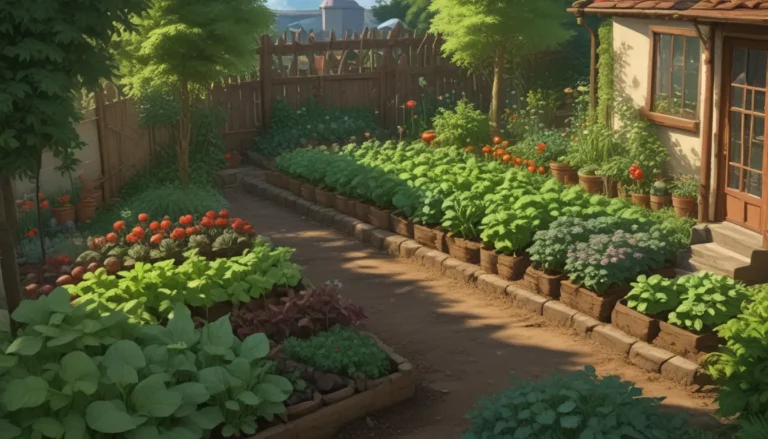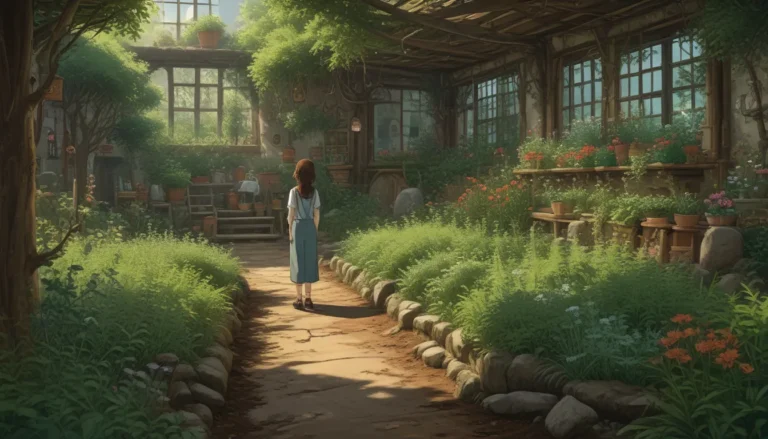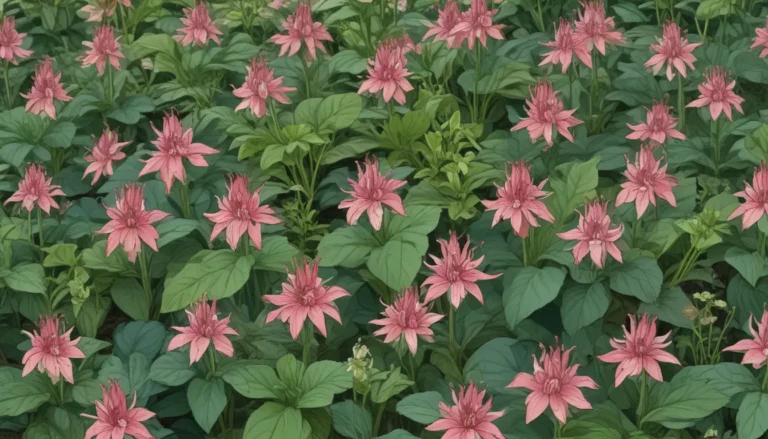How to Grow and Care for Heavenly Bamboo: A Complete Guide

Looking to add a tough, visually stunning evergreen shrub to your garden without the headache of high-maintenance plants? Look no further than heavenly bamboo, also known as Nandina domestica. This Asian-rooted shrub is not only resistant to pests and disease, but also adaptable to various soil types and exposures. Its leaves change shades with the seasons, showcasing cream-white flowers and bright red berries that attract beautiful songbirds. Plus, with minimal pruning and fertilization required, heavenly bamboo is perfect for the laid-back gardener.
So, let’s explore the wonderful world of heavenly bamboo and learn how to grow and care for this resilient plant.
What You’ll Learn
- Cultivation and History
- Propagation
- How to Grow
- Growing Tips
- Pruning and Maintenance
- Cultivars to Select
- Managing Pests and Disease
- Best Uses
- Quick Reference Growing Guide
Before we dive in, it’s important to note that heavenly bamboo is considered invasive in certain regions, so be sure to check your local laws before planting.
Cultivation and History
Originating in China and dating back to the Tang Dynasty in the sixth century BCE, heavenly bamboo made its way to Japan in the 1600s before being introduced to Europe in 1804. Despite its common name, Nandina domestica is not a true bamboo but a woody shrub. In Asian cultures, it is used for both ornamental purposes and religious offerings.
When it comes to heavenly bamboo berries, it’s essential to be cautious as they contain cyanide, which is toxic to some birds. To protect birds, consider planting non-fruiting cultivars like ‘Nana,’ ‘Gulf Stream,’ or ‘Fire Power.’
Propagation
Heavenly bamboo can be propagated from seeds, transplants, or cuttings. To propagate from seeds, harvest the bright red berries, extract the seeds, and plant them in well-drained soil. Transplanting involves planting roots or root balls two to three feet apart and watering regularly. Rooting cuttings is another option, but it may be less effective than seeds or transplants.
How to Grow
Heavenly bamboo thrives in USDA Hardiness Zones 6 to 9, preferring full sun or light shade and well-drained, fertile soil. Keep the soil moist but avoid overwatering. Amending the soil with organic material like compost or manure at the beginning of each growing season will help maintain optimal conditions.
Here are some growing tips to keep in mind:
– The leaves change colors in winter, making them ideal for holiday decorations.
– Berries are toxic, so avoid ingestion by you and your pets.
– Check local invasive species lists before planting.
Pruning and Maintenance
Heavenly bamboo benefits from annual pruning to maintain its aesthetic appeal. Prune during winter when growth has stopped, removing crowded or leggy stems. Avoid shearing the foliage excessively to preserve the plant’s natural appearance.
Cultivars to Select
While the standard Nandina domestica is impressive on its own, there are cultivars worth exploring:
– Compacta: A smaller cultivar with a brilliant red foliage.
– Fire Power: A semi-evergreen cultivar with unique, thin foliage.
– Gulf Stream: Smaller in size with striking foliage colors.
These cultivars offer a range of sizes and colors to suit various garden needs.
Managing Pests and Disease
Heavenly bamboo is relatively resistant to pests and disease, but a few issues to watch out for include:
– Cottony Cushion Scale: Treat with horticultural oil or organic herbicides.
– Powdery Mildew: Plant in full sun and space adequately to prevent fungal growth.
– Cucumber Mosaic Virus: Cull infected plants to prevent spread.
– Plantago Asiatica Mosaic Virus: Remove infected plants and use sterilized tools to prevent further transmission.
Best Uses
Heavenly bamboo shines as a specimen plant or en masse, providing year-round visual interest and contrasting textures in the landscape. Smaller cultivars can accent larger plantings, while larger varieties are perfect for camouflaging structures like sheds or drainpipes.
Quick Reference Growing Guide
Here’s a quick summary of heavenly bamboo’s growing requirements:
– Plant Type: Woody shrub
– Hardiness: Zones 6-9
– Exposure: Full sun to shade
– Soil Type: Well-drained and fertile
– Water Needs: Low
– Maintenance: Moderate
– Height: 6-8 feet
– Spread: 2-3 feet
– Pests and Diseases: Cottony cushion scale, powdery mildew, mosaic viruses
A Final Ballyhoo for Heavenly Bamboo
Heavenly bamboo is a resilient, visually appealing addition to any garden. With its rich history, ease of care, and versatility, this plant is a must-have for gardeners looking for a low-maintenance yet striking shrub. So, go ahead and enjoy all the beauty and durability that heavenly bamboo has to offer.
If you have experience growing Nandina domestica or any questions, feel free to share in the comments below. I’d love to hear from you!
Interested in more evergreen shrubs? Check out these guides next:
– Blue Star Juniper: How to Grow These Hardy Garden Staples
– How to Grow and Care for Japanese Holly
– How to Grow and Care for English Holly
Remember, before you start planting, always check local regulations regarding invasive species and plant safety. Happy gardening!





